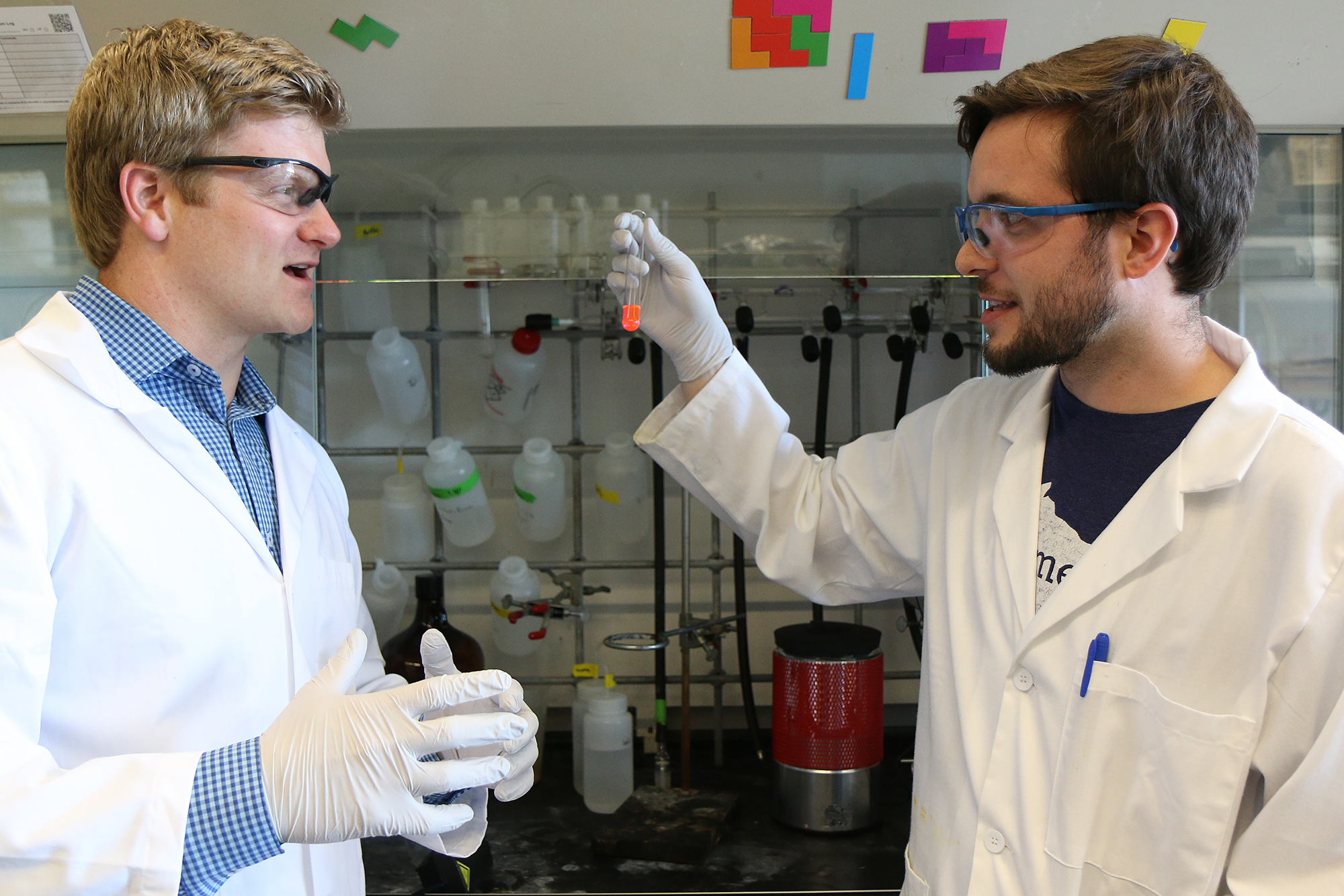
To Brett VanVeller, organic chemistry is a world of imagination where anything can be built. His passion and enthusiasm for chemistry spill over into both his teaching and his research.
In 2017 VanVeller, assistant professor of chemistry, received the LAS Award for Early Achievement in Teaching. Recently, he was named a 2018 Cottrell Scholar from Research Corporation for Science Advancement. The award aims to develop outstanding teacher-scholars recognized by their scientific communities for quality research and academic leadership skills.
“I really care about the goals of the Cottrell,” VanVeller said. “They really are focused on people who do important scientific research but also really care about education.”
He is passionate about helping students learn to apply their chemistry knowledge in a logical manner. He helps students connect very basic characteristics of atoms, such as their electronic properties, with how that relates to their structure, then how the structure relates to their activity and so on, building a framework for understanding how all the pieces fit together.
“I would classify Brett’s way of teaching as bottom-up in a sense that the basic fundamentals are emphasized and as we go about our research projects, most questions we run into are addressed with respect to these fundamentals,” said Bryan Lampkin, graduate student in chemistry who works in VanVeller’s lab. “This really helps in my understanding of chemistry because it breaks large problems down into small, much more manageable pieces.”
Lampkin is a third-year graduate student who plans to pursue a career in acadamia. He said that VanVeller’s approach helps make learning and studying more manageable because it frees up brain space by not having to memorize specific examples and allows you to focus on the fundamentals and how those concepts are applied.
“[Because of this approach], I have the ability to look at new chemical systems and have a good understanding of how and why they work without much specific prior information,” he said. “This allows my research to build on prior work more quickly and have a broader impact.”
VanVeller’s lab focuses on photochemistry, researching how to use the energy given off when a molecule returns to its resting state after being in an excited state from absorbing light.
“I have fun trying to think up new molecular tools that can do things that couldn’t be done before,” said VanVeller, “Specifically, we’re always trying to think of molecules that we can develop that can enable new methods in materials synthesis or the study of biology.”
In his most recent work, he is creating a way to quickly identify risk factors associated with diseases that arise from aggregates of misfolded proteins — called amyloids.
The protein that VanVeller is studying consists of four well-folded proteins that bind to one another. When these proteins unbind from each other, it creates an opportunity in which they can misfold and create amyloid deposits. VanVeller created a molecular tool that uses photochemistry to test the frequency with which the protein is unbound—to ultimately determine the risk of amyloid formation on a patient by patient basis.
His interest in the photochemistry process combined with potentially diagnosing health issues drew VanVeller to the experiment.
“I love molecular design,” he said. “Trying to identify a problem and dreaming up a molecule to solve it—that’s fun.”